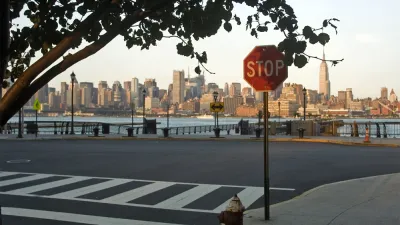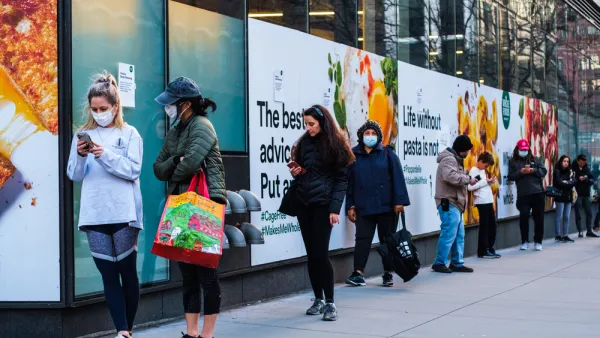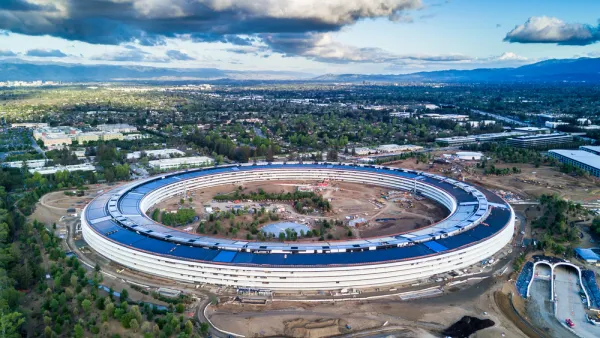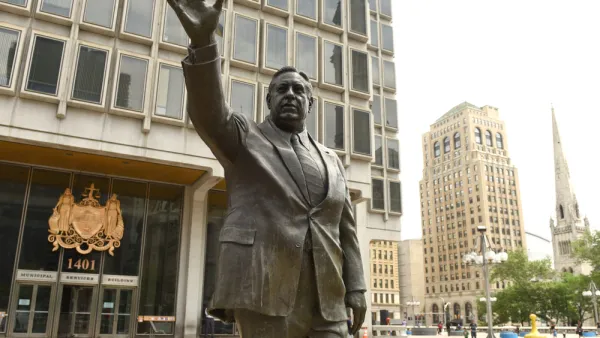Response to coronavirus challenges in urban settings will likely be a continuity of work started decades ago.

Widespread fears about the impact of the coronavirus pandemic on privacy and densification paint a picture of a frightening urban future. Contrarily, Ian Klaus shows a hopeful "radical vision of hope: As lifestyle and consumption habits have transformed overnight and governments have committed trillions of dollars of investment in national economies, perhaps the challenges of overcoming the coronavirus pandemic might ultimately foster a more equitable, sustainable urban future."
Klaus outlines five ongoing developments that could shape the cities post-pandemic:
- Affordable housing and accessible design will be celebrated as architects and urban designers continue to present innovative solutions to social issues around housing.
- The development of new building materials (think ultra-strong timber towers and biophilic design) promotes sustainability.
- Local leaders realizing the power to respond to challenges in transportation and housing.
- Networks of cities participating in collective action will continue to organize, elevating urban concerns to the global stage.
- Increased attention is paid to cities in the Global South. The resiliency of informal housing will inform future adaptation.
Studying the successes of recent history offers opportunities to identify the work that must continue and that will define wins in the future. Looking toward the challenges faced by urbanists in the post-coronavirus future Klaus adds, "We all already know much of what we will find and have to work with on the other side."
FULL STORY: The Post-Pandemic Urban Future Is Already Here

National Parks Layoffs Will Cause Communities to Lose Billions
Thousands of essential park workers were laid off this week, just before the busy spring break season.

Retro-silient?: America’s First “Eco-burb,” The Woodlands Turns 50
A master-planned community north of Houston offers lessons on green infrastructure and resilient design, but falls short of its founder’s lofty affordability and walkability goals.

Delivering for America Plan Will Downgrade Mail Service in at Least 49.5 Percent of Zip Codes
Republican and Democrat lawmakers criticize the plan for its disproportionate negative impact on rural communities.

Test News Post 1
This is a summary

Test News Headline 46
Test for the image on the front page.

Balancing Bombs and Butterflies: How the National Guard Protects a Rare Species
The National Guard at Fort Indiantown Gap uses GIS technology and land management strategies to balance military training with conservation efforts, ensuring the survival of the rare eastern regal fritillary butterfly.
Urban Design for Planners 1: Software Tools
This six-course series explores essential urban design concepts using open source software and equips planners with the tools they need to participate fully in the urban design process.
Planning for Universal Design
Learn the tools for implementing Universal Design in planning regulations.
EMC Planning Group, Inc.
Planetizen
Planetizen
Mpact (formerly Rail~Volution)
Great Falls Development Authority, Inc.
HUDs Office of Policy Development and Research
NYU Wagner Graduate School of Public Service





























